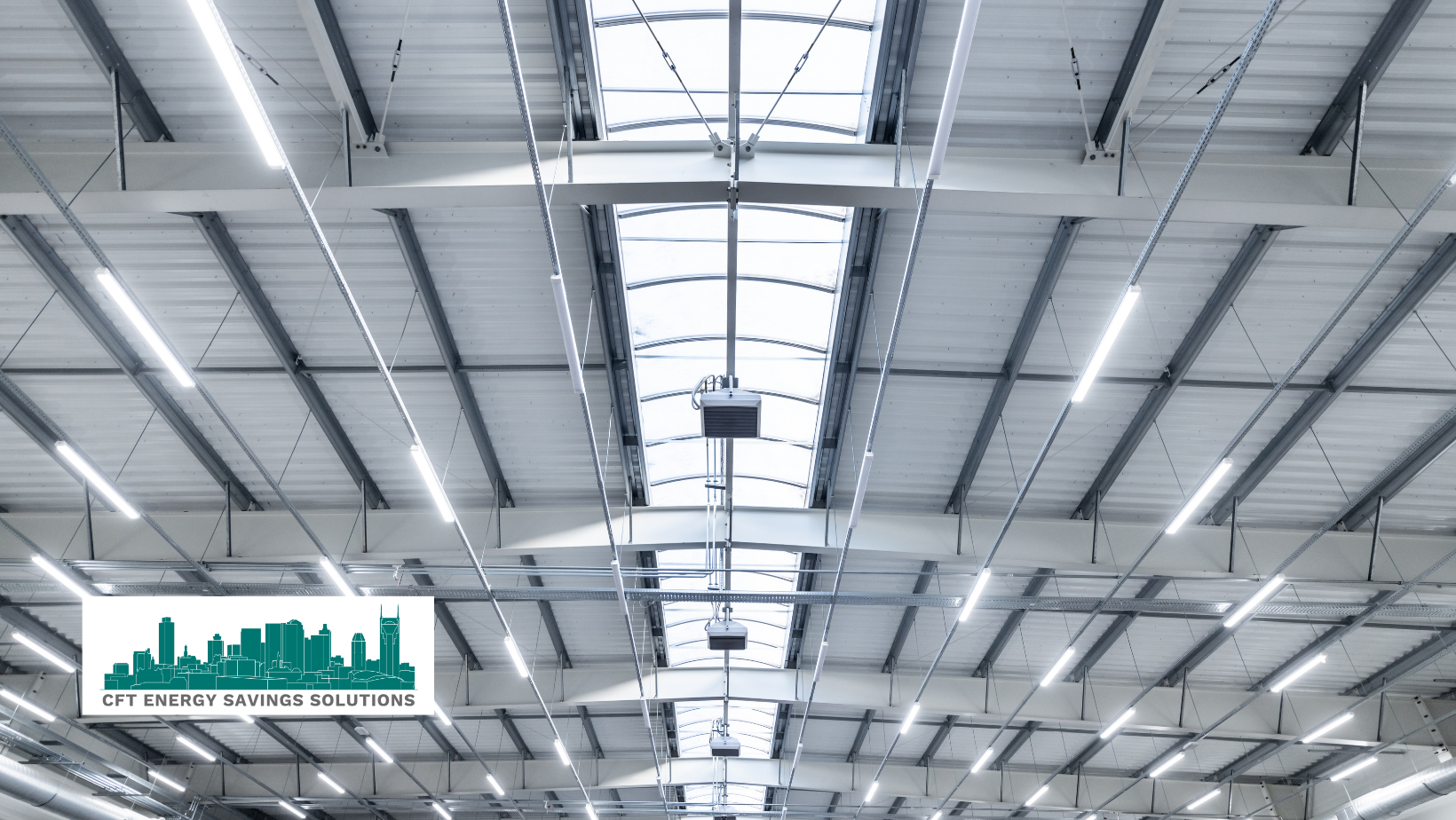
How Building Automation Systems Can Optimize Efficiency and Lower Energy Costs
Building automation systems (BAS) are essential for reducing energy consumption in commercial and industrial properties. This guide explains the functions of BAS, its role in optimizing energy usage, and the key benefits it provides for businesses. Discover how implementing this system can reduce energy waste, lower operational costs, and create a sustainable future for your facility.
Why Energy Efficiency Matters for Businesses
The Case for Reducing Energy Consumption in Commercial and Industrial Buildings
For businesses, energy efficiency is more than just a cost-saving measure; it’s an operational priority that can significantly impact the bottom line. In today’s competitive market, companies are increasingly focused on sustainability and efficiency and building automation systems (BAS) offers a powerful solution to achieve both. By automating energy usage and monitoring system performance, BAS provides businesses with control over energy consumption, creating opportunities for substantial cost savings and improved sustainability.
What are Building Automation Systems (BAS)?
Understanding BAS and Their Impact on Energy Management
Building automation systems are centralized networks that monitor and control a building’s systems, such as heating, ventilation, air conditioning (HVAC), lighting, and security. By automating these functions, BAS ensures optimal operation and minimizes energy waste. BAS also helps facility managers respond proactively to changes in building occupancy or weather conditions, making it easier to conserve energy without compromising comfort or productivity.
How EMS Complements BAS to Maximize Energy Efficiency
A building automation system is designed to monitor, analyze, and control energy usage. BAS provides real-time data and insights into energy consumption patterns, enabling facility managers to make informed decisions about energy-saving measures. BAS allows businesses to create a comprehensive approach to energy management that combines automation with data-driven decision-making.
Key Benefits of Building Automation Systems in Reducing Energy Consumption
Why BAS is Essential for Commercial and Industrial Properties
Implementing BAS offers several advantages that contribute to energy efficiency and cost reduction:
- Reduced Energy Waste
BAS detects and adjusts energy usage automatically, preventing overuse and cutting down on energy waste. For instance, lighting and HVAC systems can be programmed to turn off in unoccupied areas, reducing unnecessary consumption. - Enhanced Operational Efficiency
BAS simplifies the management of building systems, streamlining operations for facility managers. By automating processes and centralizing control, BAS minimizes the need for manual adjustments and allows facilities to operate more efficiently. - Cost Savings
Through targeted energy reductions, BAS help businesses lower utility costs. Real-time data from BAS allows for immediate adjustments to energy use, while long-term trends enable planning for further efficiency upgrades. - Improved Building Comfort and Occupant Satisfaction
BAS ensures that building systems function optimally, maintaining comfortable temperatures and lighting levels. This improves employee satisfaction, creating a healthier and more productive work environment. - Environmental Sustainability
Reducing energy consumption directly contributes to a lower carbon footprint, making BAS a valuable tool for businesses aiming to achieve sustainability goals and meet regulatory requirements.
How Building Automation Systems Work
An Inside Look at BAS and Their Functions
Building automation systems consist of a network of sensors, controllers, and actuators that communicate with each other to manage a building’s energy-related systems. Here’s a closer look at how BAS operates:
- Sensors gather data on variables like temperature, humidity, occupancy, and light levels.
- Controllers process this data and make decisions based on pre-set parameters or real-time conditions.
- Actuators implement these decisions, such as adjusting thermostat settings or dimming lights.
By monitoring these systems continuously, BAS ensures that energy is used only when needed, reducing consumption and costs.
Enhance BAS with New Day Analytics Service and Software, CBS and BDX
With software enhancements for BAS, facilities can leverage advanced energy data analytics to fine-tune operations. Analytic software installed as an overlay to BAS tracks historical data, helping facility managers identify peak usage times, energy-intensive areas, scheduling issues, equipment inefficiencies and equipment servicing needs is a proactive approach to building operation. Analytics software that is BAS agnostic can be used to aggregate data from different manufactured BAS in multiple buildings. Connected Buildings Services (CBS) is the process for setting up multiple systems sharing information and organized data that allows for analysis and intelligent actions to happen more efficiently through a central location. A BAS agnostic platform used as a gateway to your various building automation and other systems for pulling in data, organizing it, and reporting it in an actionable format for improving efficiencies in operation and savings in operating and energy cost is Building Data Exchange (BDX).
Upgrading BAS with Analytics Software for Maximum Energy Efficiency
Steps to Successfully Integrate BAS and BDX into Your Facility
- Conduct an Energy Audit
Before implementing BDX, conduct an energy audit to assess current energy usage and identify areas for improvement. Assess the programmed sequences of operation in the existing BAS. An audit provides a baseline that will help you measure the impact of BAS modifications and BDX over time. - Assess the Current Status of the Existing BAS Solution
Audit the programmed sequences of operation and scope of work of the existing Is the original design comprehensive. Is the BAS current with open protocols for communication like BACnet and MODbus. Working with an experienced provider, like CFT Energy Savings Solutions, ensures that you choose the best technologies for your business. - Set Energy Efficiency Goals
Define clear objectives for reducing energy consumption, such as targeting a specific reduction percentage or focusing on high-energy systems. Setting goals will guide the BAS upgrades, if any, and BDX configurations and help measure progress. - Train Staff and Promote System Use
Once BAS and BDX is upgraded and installed, training your team on their functions is essential. By involving facility managers and staff in using these systems, you can maximize their benefits and encourage best practices for energy management. - Regularly Review and Adjust Settings
Periodic reviews ensure that BAS and BDX continue to operate at peak efficiency. Analyzing data trends and making seasonal adjustments keeps systems aligned with energy-saving goals. BDX performs continuous re-commission by providing actionable reports for you to become proactive in BAS operations.
The Financial and Environmental Impact of Building Automation Systems
How BAS BDX Contribute to Cost Savings and Sustainability
With the rising costs of energy and increased focus on environmental responsibility, BAS and BDX offer a significant advantage for businesses. By automating energy management, facilities save on utility costs and reduce their carbon footprint. This not only benefits the company’s financial health but also supports broader sustainability efforts, making BAS and BDX integral to a company’s corporate responsibility initiatives.
Why Choose CFT Energy Savings for Building Automation Solutions
Get Customized Solutions for Enhanced Energy Efficiency
CFT Energy Savings specializes in building automation systems and energy management solutions designed to meet the unique needs of commercial and industrial facilities. Our team provides comprehensive energy audits, strategic planning, and expert installation to help your facility reduce energy consumption and costs. With CFT Energy Savings Solutions, you can achieve your energy efficiency goals and build a sustainable future.
Ready to Optimize Your Facility’s Energy Efficiency?
Contact CFT Energy Savings Solutions today to learn more about building automation systems and how our energy management solutions can help your business reduce energy consumption. Schedule an energy audit with us to receive a customized cost savings projection and start your journey toward a more efficient and sustainable operation!
Start Saving Today
Unlock
25% OFF bundled services for a limited time when you combine.
- SmartValve™
- PowerHouse™
- PacketPower Metering
- BuildingLogic™ Continuous Commissioning
CFT’s breakthrough energy solutions boost net operating income and increase property value — from
day one.
Sustainability starts here. So does your savings. Click below to schedule your energy savings consultation.














